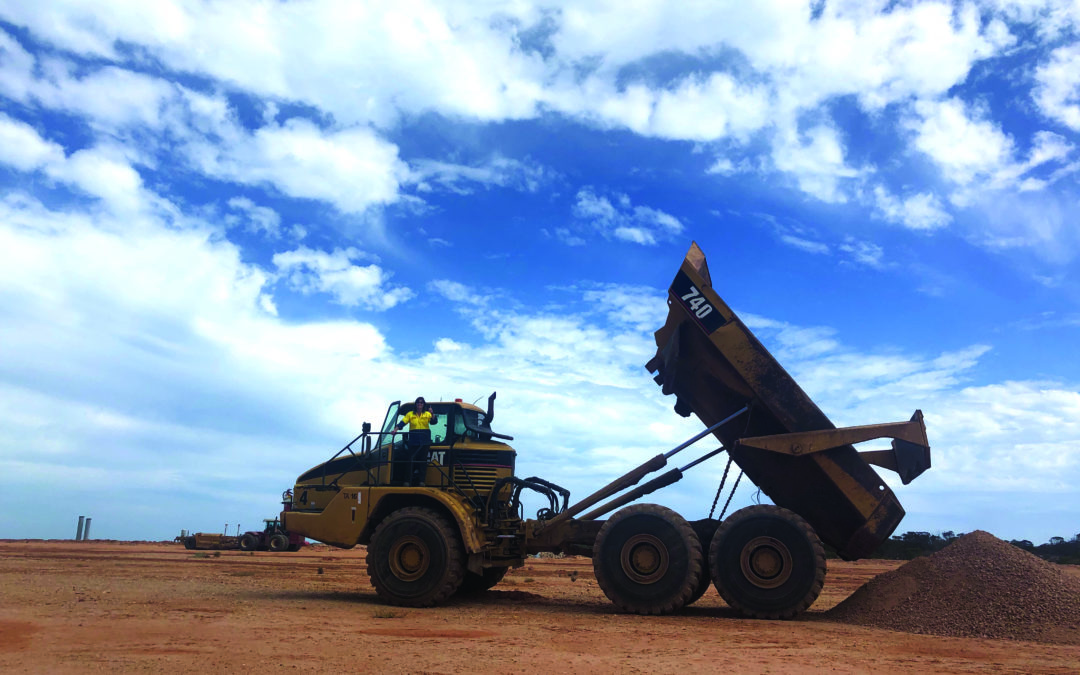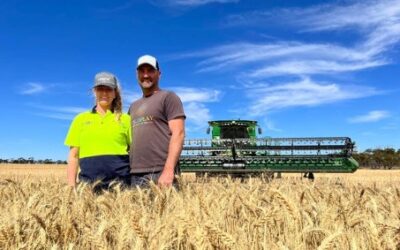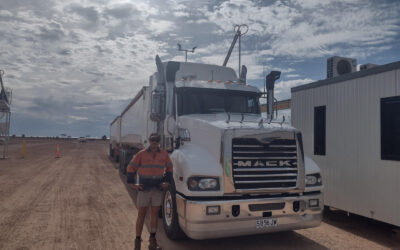Construction has begun on the next phase of T-Ports’ Lucky Bay port project with contractors beginning earthworks at the site last week, as work to complete the upcountry bunker sites nears completion.
Contractors Keller (ground improvement) and Buttrose Earthmovers (earthworks) have begun port construction.
T-Ports Chief Executive Officer Kieran Carvill said it was an exciting step in the project’s timeline and signalled the project was on track to deliver its goal of bringing the port closer to the product.
“Heavy machinery has now arrived for the remediation and ground improvement work at the site,” he said. “More equipment will move in for the concrete and structural steel works in the weeks to follow.
“The many years of work that have gone into the project are now beginning to come to fruition in a really visible way in coming months.”
The $130 million Lucky Bay project features two up-country bunker storage sites at Lock and Lucky Bay with approximately 500,000 tonnes of capacity, steel silos at port with approximately 24,000 tonnes of storage, port receival and loading facilities, a bespoke transhipment vessel with a capacity of 3,500 tonnes and a fertiliser import and storage facility.
Mr Carvill said T-Ports was a proudly South Australian company and committed to supporting South Australian businesses and regional communities.
“We’ve hired local companies like Lienert Engineering, Lucas Total Contract Solutions, Ahrens, Kilic Engineering and Buttrose Earthmovers in construction along with local carriers freighting materials,” he said.
“The bunker sites are now all but complete, with bunker walls at Lock fully installed and work to finish the walls at Lucky Bay to be completed in the next few weeks.
“We are on track to be open and ready for grain deliveries in October this year and look forward to a long and productive relationship with growers on the Eyre Peninsula.”
Mr Carvill said he was aware growers had been promised many things over many years but having the Lucky Bay port construction now underway demonstrated the company’s commitment to the region.
“We see a long and beneficial partnership with EP communities and we know this development will provide grain growers in the region the competition in the supply chain they have been waiting a long time for,” he said.
“For the first time in the southern hemisphere, transhipment technology, which has been used successfully in other industries for more than 20 years, will be used to export grain.
“The lower build cost and lower environmental footprint compared with traditional export port facilities in SA has made the financial feasibility of the investment easier to attain with a lower throughput requirement from growers.
“This model means growers can access multiple small ports that can load vessels up to and including Panamax, allowing product to be exported profitably, which will prove a great benefit to EP growers and South Australia.”
In addition to the increased competition in the EP supply chain, grain growers are expected to save from $5-$20 per tonne in transporting grain from farm to port, depending on their proximity to Lucky Bay.
“We think this is going to make a very serious positive difference to regional economies across the Eyre Peninsula,” Mr Carvill said.
“We want to see employment come back. There will be a lot of side services that are needed and there will be housing needed, so it should give a real boost to the local economy.
“It has the economic strength of changing the paradigm of how commodities are exported, of bringing the port to the product, of reducing the cap-ex spend within ports, reducing infrastructure internally and reducing domestic freight distances.”
T-Ports will also begin a recruitment drive in coming months to ensure sites are staffed for the 2019 harvest. More information will be available on the T-Ports website.




